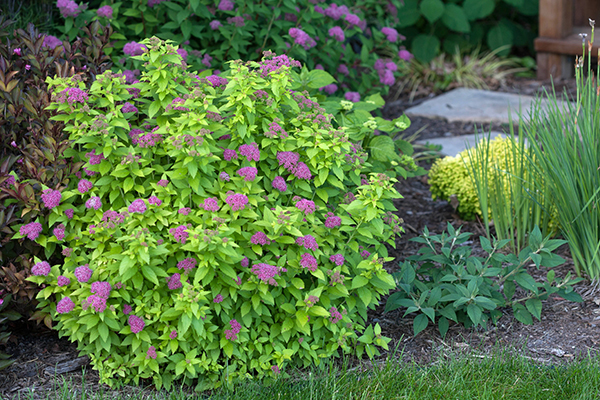What Evergreen Shrubs Do Well In Shade

What evergreen shrubs do well in shade
3 Evergreens For Shade
- Yew. A very hardy evergreen choice for shaded areas is the yew.
- Boxwood. A longtime favorite in landscapes, the boxwood was first brought to North America from Europe in the 1600s. ...
- Hemlock.
Will boxwoods grow in full shade?
Boxwood is a very traditional shade tolerant shrub. You may recognize boxwood in gardens you've visited. It's normally sheared into perfect shapes and lines walkways with low growing thick greenery. Boxwood is an excellent choice for this purpose.
What is the best arborvitae for shade?
Arborvitae will tolerate light shade. Techny, Emerald, and Holmstrup are medium sized arborvitae that can be used for screening. Arrowwood viburnum, Cornelian cherry dogwood, and witchhazel are a few deciduous shrubs that can tolerate shade and provide screening and some seasonal interest.
Which boxwoods do best in shade?
English Boxwood
- North Star (B.
- Jensen is another American boxwood but has a rounded shape that resembles some English boxwood varieties. ...
- Elegantissima has creamy white edges around its green foliage and does best with afternoon shade in zones 6 through 8.
Can arborvitae be in shade?
Arborvitae, or white cedar (Thuja occidentalis), develops its best shape when grown in full sun, but it will grow in some shade also. Arborvitae will not be as full and dense when grown in shade. Used extensively in landscaping, arborvitae is valued for its hardiness and attractive foliage.
Can emerald green arborvitae grow in full shade?
Emerald Green Arborvitae thrive in full sun but can grow in partial shade as well. Too much shade will lead to sparse growth. To flourish, these trees need at least six hours of direct sunlight per day.
Can Green Giant arborvitae tolerate shade?
Sun and shade Thuja Green Giants are highly adaptable and can grow well in the spectrum from full sun to partial shade. These trees do best with a minimum of four hours of direct and unfiltered sunlight per day.
Will cedar trees grow in the shade?
While it can tolerate just about any growing conditions, other than full shade, it does best in deep, moist, well-drained alluvial soil with a pH value ranging from 4.7 to 7.8 and full sun to part shade.
Can green velvet boxwood survive in shade?
Full sun and partial shade are best for this shrub, meaning it prefers a minimum of 4 hours of direct, unfiltered sunlight each day.
What is the fastest growing shrub for shade?
Forsythia is the fastest-growing shade shrub on this list, so if you're looking to fill the space fast, consider planting forsythia.
Can wintergreen boxwood grow in shade?
The Wintergreen Boxwood will grow well in lots of different light conditions, from full sun to shade, so hedges that move into different areas will look great wherever they are growing. It will grow in any ordinary garden soil, and it will grow best in well-drained soils that do not become completely dry.
Can emerald cedars grow in shade?
Emerald Cedar Arborvitae prefer full sun and tolerate part shade. However, for the healthiest foliage, plant them in full sun.
What cedars are best for shade?
American arborvitae (Thuja occidentalis) and western red cedar (Thuja plicata) are both Native American trees that can thrive in sun or in high shade. If you want conifers for shade with mounded shapes and a loose growth habit, consider variegated elkhorn cedar (Thujopsis dolabrata 'Nana Variegata').
How much sun do emerald cedars need?
Emerald cedars thrive in full sun in fertile, well-drained soil with summer watering for the first few seasons. In these conditions, they grow 8 to 12 inches a year.
What's better American arborvitae or emerald green arborvitae?
Some varieties of American Arborvitae are more tolerant to warm weather than others. If you live in the south, check which varieties grow best in your region. Emerald Green grows in zones 3 to 7, so it's slightly less hardy but can still grow in most parts of the U.S.
How many hours of sun do Emerald Green arborvitae need?
Full sun and partial shade are best for this tree, meaning it prefers a minimum of four hours of direct, unfiltered sunlight each day.
What is the lifespan of arborvitae?
a lifespan of 50 to 150 years.
What is the difference between Thuja and arborvitae?
Different suppliers will refer to some trees as either an Arborvitae or a Thuja. This has created confusion among individuals thinking that they are two different trees, however, they are the same species.
Which is better Leyland cypress or Green Giant arborvitae?
If you live in a hot climate and the planting site is shaded in the afternoon, for example, then the best tree would be "Green Giant," because it grows best with some afternoon protection from the hot sun. On the other hand, the Leyland cypress grows best in full, hot sunlight.
What is the difference between emerald green and green giant arborvitae?
The Green Giant is better suited for areas with a lot of space to fill in, so if you have more ground to cover, consider this large Thuja. Emerald Green Thujas are perfect for smaller landscapes because they only grow to heights between 8 and 12 feet. They have a much smaller spread, growing about 3 to 4 feet wide.












Post a Comment for "What Evergreen Shrubs Do Well In Shade "